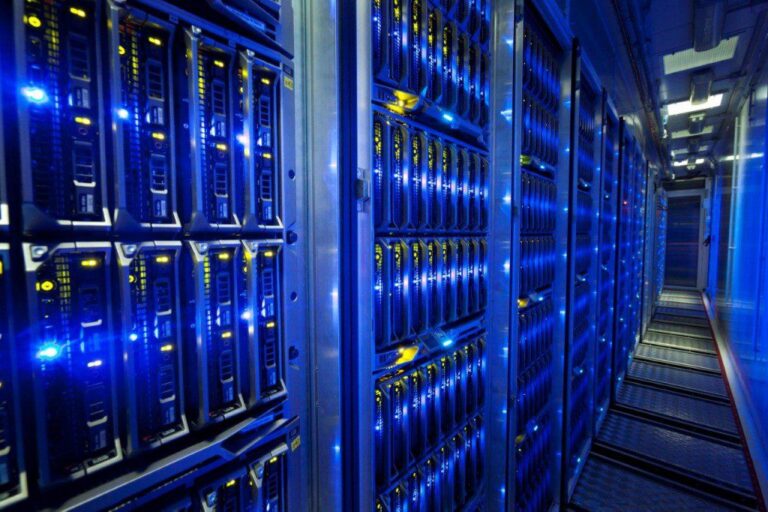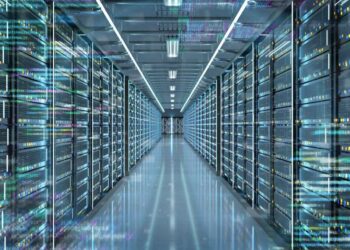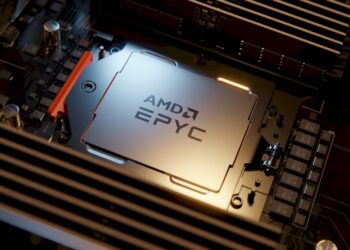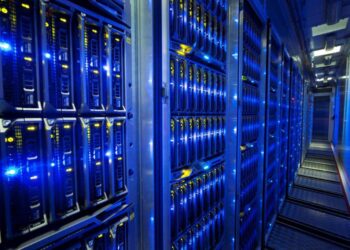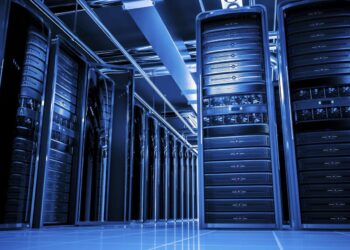The relentless pursuit of computational power has pushed the humble server to its absolute limits. As processors become more potent, graphics cards accelerate complex calculations, and data centers expand to hyperscale proportions, one critical challenge persistently looms large: heat. Unchecked heat is the silent killer of server performance, reliability, and ultimately, efficiency. It leads to throttling, premature component failure, and colossal energy consumption from traditional cooling systems. The escalating demand for high-performance computing, particularly driven by artificial intelligence (AI) and machine learning (ML) workloads, means that conventional air-cooling methods are increasingly insufficient. This imperative has sparked a wave of next-gen server cooling innovations, transforming the very infrastructure that underpins our digital world.
The Intensifying Heat Challenge

Modern servers pack an extraordinary amount of processing power into increasingly dense footprints. High-performance CPUs, GPUs, and specialized AI accelerators generate immense thermal loads. A single rack can consume tens of kilowatts of power, with nearly all of it converted into heat. Traditional data centers rely heavily on massive air conditioning units, raised floors, and hot/cold aisle containment to dissipate this heat. However, this approach has significant drawbacks:
- Energy Inefficiency: Cooling systems can account for 30-50% of a data center’s total energy consumption.
- Space Constraints: Airflow management requires significant physical space, limiting server density.
- Thermal Runaway Risk: Inefficient cooling can lead to localized hot spots, jeopardizing hardware longevity.
- Noise Pollution: Large fans and cooling units generate considerable noise.
- Environmental Impact: High energy consumption contributes to carbon emissions.
These challenges highlight the urgent need for more effective, sustainable, and scalable cooling solutions. The innovations emerging today are not just incremental improvements; they represent a fundamental rethinking of how we manage thermal energy in data centers.
Pioneering Next-Gen Cooling Technologies
The evolution of server cooling is moving beyond simple airflow. It’s embracing physics, chemistry, and intelligent management to tackle heat at its source and dissipate it with unprecedented efficiency.
A. Liquid Cooling
Water, with its far superior thermal conductivity and heat capacity compared to air, has emerged as the frontrunner in next-gen server cooling. Liquid cooling offers a drastic improvement in heat removal efficiency and server density. There are several prominent approaches to liquid cooling:
- Direct-to-Chip Liquid Cooling (Cold Plate Cooling): This method involves fitting cold plates directly onto hot components like CPUs, GPUs, and memory modules. A closed loop circulates a non-conductive dielectric fluid or water/glycol mixture through these plates, absorbing heat directly from the chip’s surface. The heated fluid then flows to a heat exchanger, where it’s cooled before returning to the server.
- Advantages: Extremely efficient heat removal, enabling higher component power densities. Reduces reliance on large air handlers, freeing up data center space. Can lead to significantly lower Power Usage Effectiveness (PUE) values.
- Applications: High-performance computing (HPC) clusters, AI/ML training systems, supercomputers, and highly dense server racks.
- Immersion Cooling: This revolutionary approach involves completely submerging server components, or even entire server racks, into a thermally conductive, non-electrically conductive (dielectric) fluid. There are two main types:
- Single-Phase Immersion Cooling: Servers are submerged in a fluid that remains in its liquid state. The fluid heats up and circulates through a heat exchanger to dissipate the heat.
- Advantages: Eliminates fans, significantly reduces noise, provides excellent heat transfer, protects components from dust and humidity. Enables ultra-high server density.
- Two-Phase Immersion Cooling: Servers are submerged in a dielectric fluid with a very low boiling point. The heat from the components causes the fluid to boil and turn into vapor. This vapor rises, condenses on a cooled condenser coil at the top of the tank, and then drips back down as liquid.
- Advantages: Extremely efficient due to latent heat transfer during phase change. Even greater heat removal capacity than single-phase. Passive cooling (no pumps needed for fluid circulation due to natural convection).
- Applications: Hyperscale data centers, cryptocurrency mining farms, edge computing deployments where space and efficiency are critical, and specialized research facilities.
- Challenges for Immersion: Initial setup cost, finding suitable dielectric fluids (non-toxic, stable, cost-effective), potential for fluid leaks, and maintenance procedures requiring specialized training. However, these challenges are being rapidly addressed by ongoing innovation.
- Single-Phase Immersion Cooling: Servers are submerged in a fluid that remains in its liquid state. The fluid heats up and circulates through a heat exchanger to dissipate the heat.
B. Advanced Airflow Management and Containment
While liquid cooling gains traction, innovations in air cooling continue to play a vital role, especially for existing infrastructure. These focus on optimizing airflow to maximize efficiency.
- Hot Aisle / Cold Aisle Containment: This method physically separates hot exhaust air from cold intake air in server rows.
- Hot Aisle Containment (HAC): Encloses the hot aisle, preventing hot air from mixing with cold intake air. The hot air is channeled directly back to the CRAC (Computer Room Air Conditioner) units.
- Cold Aisle Containment (CAC): Encloses the cold aisle, ensuring all cold air is directed to server intakes, preventing it from mixing with ambient room air.
- Advantages: Prevents hot spots, reduces bypass airflow, and improves the efficiency of CRAC units by increasing the temperature differential.
- Computational Fluid Dynamics (CFD) Modeling: Sophisticated CFD software is used to simulate airflow patterns, temperature distribution, and pressure zones within data centers. This allows engineers to optimize rack layouts, CRAC placement, and containment strategies before physical implementation, preventing costly mistakes.
- Smart Fans and Adaptive Cooling: Server fans and data center cooling units are becoming smarter, leveraging sensors and AI to dynamically adjust fan speeds and cooling output based on real-time thermal loads and external weather conditions. This minimizes energy consumption while maintaining optimal temperatures.
- Rear Door Heat Exchangers (RDHX): These are essentially liquid-to-air heat exchangers mounted on the rear of server racks. Hot air exiting the servers passes through the RDHX, transferring its heat to a liquid loop, which then carries the heat away. This captures heat very close to its source before it can mix with room air.
C. Heat Reuse and Waste Heat Recovery
Rather than simply dissipating waste heat into the atmosphere, a significant innovation is the concept of heat reuse. This approach turns a former problem into a valuable resource.
- District Heating: Data centers with liquid cooling systems can achieve very high water temperatures (e.g., 60-70°C). This “waste heat” can be repurposed to heat nearby buildings, residential areas, or even greenhouses. Projects like the Stockholm Data Parks are pioneering this concept, where data center heat contributes to the city’s district heating network.
- Industrial Processes: High-temperature waste heat can be utilized in various industrial processes, such as drying, sterilization, or preheating.
- Aquaculture: Some innovative projects are even exploring using data center waste heat to warm water for fish farming, creating a symbiotic relationship.
- Organic Rankine Cycle (ORC): This technology can convert lower-grade waste heat into electricity. While not yet widespread for data centers, it holds potential for generating additional power from the heat produced by servers.
- Advantages: Significantly reduces the carbon footprint of data centers, creates new revenue streams or offsets heating costs, and improves overall energy efficiency far beyond PUE metrics.
D. Modular and Prefabricated Data Centers (MPDC)
These solutions are designed with integrated cooling from the ground up, often leveraging highly efficient liquid cooling or optimized air cooling within a contained, factory-built module.
- Containerized Data Centers: Entire data centers, including servers, cooling, and power, are built into standard shipping containers. These are ideal for edge computing or rapid deployment in remote locations. Cooling solutions are highly integrated and often liquid-based due to the high density.
- Modular Data Centers: Pre-engineered and pre-fabricated modules for specific functions (e.g., IT, power, cooling) are assembled on-site. This approach allows for rapid scaling and tailored cooling solutions for each module.
- Advantages: Faster deployment, reduced construction costs, better quality control, and often more energy-efficient cooling due to optimized designs.
E. Refrigerant-Based Cooling (Direct Expansion)
Similar to how your refrigerator works, direct expansion (DX) cooling uses a refrigerant that undergoes a phase change (evaporation) directly at the heat source to absorb heat.
- In-Rack DX Units: These units are placed directly within server racks. The refrigerant evaporates inside coils within the rack, absorbing heat from the server exhaust air.
- Closed-Loop Systems: These systems can be completely sealed, preventing contamination and offering high efficiency.
- Advantages: Can achieve very low temperatures, ideal for high-density racks without a centralized chilled water plant. Offers precise temperature control.
- Challenges: Refrigerants can have a high global warming potential (though more environmentally friendly options are emerging). Requires careful handling and specialized maintenance.
F. AI-Driven Cooling Optimization
Artificial intelligence is not just benefiting server performance directly; it’s also revolutionizing how we manage data center cooling systems.
- Predictive Cooling: AI algorithms analyze real-time data from thousands of sensors (temperature, humidity, airflow, server load, external weather patterns) to predict thermal loads. Based on these predictions, AI proactively adjusts fan speeds, chiller output, and pump flow rates, optimizing cooling efficiency before hot spots even occur. Google’s DeepMind famously used AI to reduce cooling energy consumption in its data centers by 40%.
- Dynamic Load Balancing for Thermal Management: AI can intelligently shift workloads between servers and racks to distribute heat more evenly, preventing localized hot spots and allowing cooling systems to operate more efficiently.
- Fault Detection and Diagnostics: AI can detect subtle anomalies in cooling system performance that might indicate impending failure or inefficiencies, alerting operators to issues before they become critical.
- Optimization of Free Cooling: AI maximizes the use of “free cooling” (using cool outside air to cool data centers) by intelligently balancing external air intake with mechanical cooling when conditions are favorable.
- Advantages: Significantly reduces energy consumption, improves cooling system reliability, and enables more precise thermal management, leading to extended hardware lifespan.
The Broader Impact and Future Outlook

The innovations in server cooling are not isolated advancements; they are integral to several critical trends shaping the future of computing.
- Sustainability and Green Computing: More efficient cooling directly translates to reduced energy consumption and lower carbon emissions. This is crucial for meeting corporate sustainability goals and combating climate change.
- Edge Computing Enablement: Deploying powerful servers at the edge (closer to data sources) often means operating in non-traditional environments with limited space and infrastructure. Compact, highly efficient cooling solutions, particularly liquid cooling, are essential for making edge AI and IoT viable.
- High-Performance Computing (HPC) and AI Acceleration: The sheer density of compute power required for advanced AI model training and complex scientific simulations is only possible with highly effective cooling that goes beyond air. Liquid cooling is becoming a de facto standard in this domain.
- Increased Server Density: Better cooling allows for more powerful servers to be packed into smaller physical footprints, leading to higher compute density per square foot in data centers. This reduces real estate costs and optimizes infrastructure utilization.
- Reduced Operational Costs: While initial investment in advanced cooling can be higher, the long-term savings in energy consumption, reduced hardware replacement costs, and increased uptime often provide a strong return on investment.
Challenges and Future Directions
Despite the exciting progress, challenges remain on the path to widespread adoption of next-gen cooling:
- Initial Investment: The capital expenditure for implementing advanced liquid cooling systems can be higher than traditional air cooling.
- Infrastructure Adaptation: Existing data centers may require significant retrofitting to accommodate liquid cooling, including plumbing, fluid management, and specialized racks.
- Skills Gap: Maintaining and troubleshooting liquid cooling systems requires specialized knowledge and training for IT staff.
- Standardization: A lack of universal standards for fluid types, connectors, and protocols can hinder widespread adoption and interoperability.
- Long-Term Reliability and Maintenance: While promising, the long-term reliability and maintenance needs of new cooling technologies are still being established.
Looking ahead, we can expect continued innovation driven by the relentless demand for processing power. This includes:
- Hybrid Cooling Solutions: Combining different cooling methods (e.g., direct-to-chip liquid cooling for CPUs/GPUs and air cooling for less demanding components) to optimize efficiency and cost.
- Advanced Materials: Research into new materials for heat sinks, phase-change materials, and thermal interface materials will continue to improve heat transfer.
- Rack-Level and Row-Level Cooling: More integrated cooling solutions that manage heat at the rack or row level, reducing the need for massive data center-wide cooling systems.
- Open-Source Collaborations: Increased collaboration across the industry to develop open standards and best practices for liquid cooling.
- Sustainable Fluids: Development of more environmentally friendly and cost-effective dielectric fluids for immersion cooling.
Conclusion
The future of high-performance computing hinges on our ability to effectively manage heat. Next-gen server cooling innovations are not just about keeping machines running; they are about unlocking new levels of performance, efficiency, and sustainability for the digital age. From the transformative power of liquid immersion to intelligent AI-driven thermal management and the responsible reuse of waste heat, the industry is embracing a paradigm shift. As the demands of AI, big data, and edge computing continue to intensify, these cutting-edge cooling solutions will be the silent enablers, ensuring that the servers underpinning our interconnected world remain cool, reliable, and ready for whatever the future of innovation brings. Investing in these technologies is no longer an option but a strategic imperative for any organization aiming for leadership in the digital frontier.

